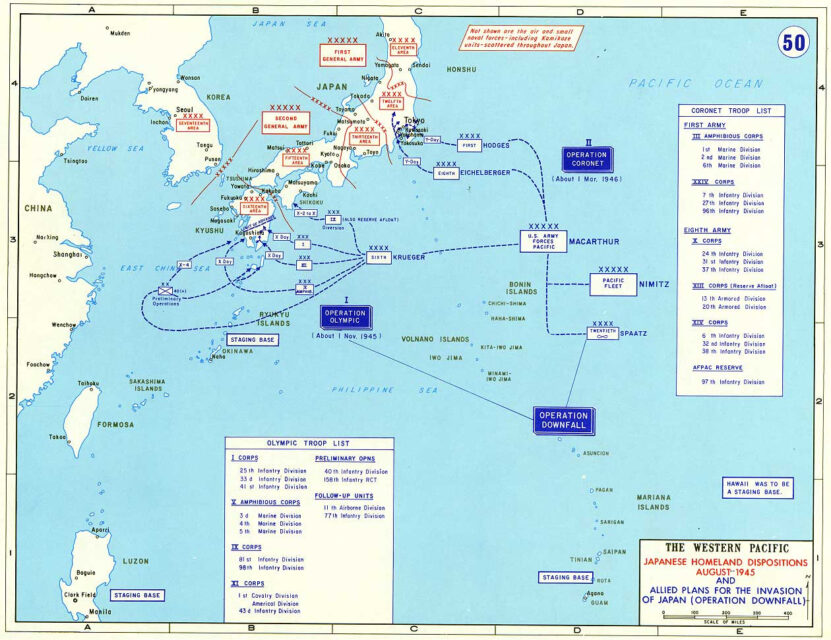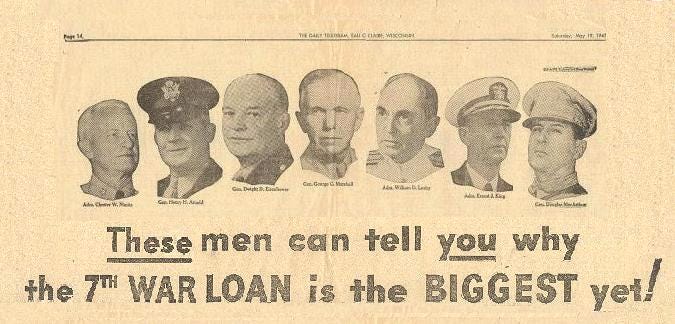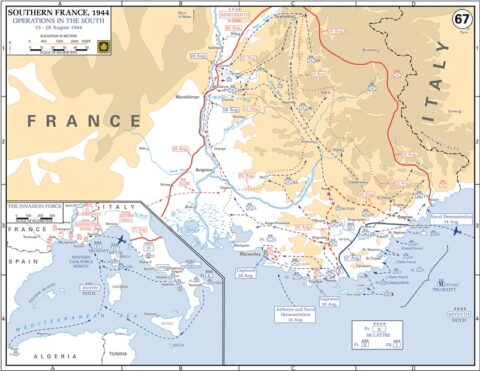World War Two
Published 24 Aug 2024The Soviet Red Army completes its conquest of Manchuria and the northern half of Korea this week, although Japanese Emperor Hirohito announced Japan’s surrender already last week. Behind the scenes are machinations going on by Josef Stalin and Mao Zedong that they hope will lead to a Communist China in future. Vietnam might well be going communist right now, though, for the August revolution continues with the Viet Minh taking ever more control.
00:00 Intro
00:34 Recap
00:49 Chiang, Mao, and Stalin
07:32 Soviet victory in Manchuria
09:08 Viet Minh taking control
11:45 Summary
12:31 Conclusion
13:20 Julius Poole memorial
(more…)
August 25, 2024
Soviet Victory in Manchuria – WW2 – Week 313 – August 24, 1945
August 24, 2024
How the CIA eventually got Patrice Lumumba assassinated
The CIA decided early on that the first democratically elected Prime Minister of the Democratic Republic of the Congo was being controlled by their Soviet opponents and needed to be killed:
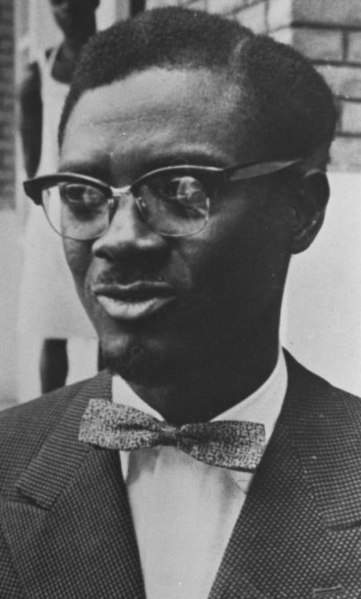
Patrice Émery Lumumba, first Prime Minister of the Democratic Republic of the Congo on 27 December 1960.
Unknown photographer
I’m still making my way through David Talbot’s 2015 book The Devil’s Chessboard, a history that explores the life of CIA Director Allen Dulles and the sordid history of the agency.
There are too many grisly anecdotes to recount showing how the CIA was involved in unlawful and unethical acts all over the world, but one that sticks out was the book’s treatment of Patrice Lumumba, an African nationalist who served as the first prime minister of the Democratic Republic of the Congo before he was killed in 1961 — with a shove from the CIA.
Lumumba was a thorn in the side of the agency, and his left-leaning politics led CIA officials to believe he was a stooge for the USSR (he wasn’t, as the CIA later admitted). So it was determined that Lumumba had to go—one way or the other.
First, a coup was arranged to have the democratically-elected Lumumba, who was demanding full independence for the Congolese people, removed from office and placed under arrest. To this end, the CIA tapped a young military colonel named Joseph Mobutu, who was friendly with Belgian intelligence (the Congo had long been under Belgian colonial rule) and would go on to rule for decades until he was ousted himself in a 1997 rebellion.
Then the CIA began exploring options to eliminate the popular Lumumba. Being the CIA, a single method was not chosen. Instead, various methods were explored to take out the Congolese leader and multiple people were tapped, including a pair of hitmen the agency had hired from Europe’s criminal underworld.
Talbot explains how the CIA equipped one of these cutthroats with a tube of poisoned toothpaste. Why toothpaste? Because one Dr. Ewen Cameron, at the behest of the CIA, had analyzed Lumumba and noted his immaculate white teeth. This led him to suggest a simple way to eliminate the troublesome leader: poison his dental products.
“In the end, the CIA did not go through with the toothpaste plot,” writes Talbot, “apparently deciding that poisoning a popular leader while he was under UN protective custody in his own house would be too flagrant a deed—one that, if traced back to the agency, would lead to unpleasant international repercussions.”
Instead, days before the inauguration of John F. Kennedy, the CIA arranged to have Lumumba chartered off on a plane to Katanga, a province that had broken from the Congo and was ruled by factions hostile to Lumumba.
This all but sealed Lumumba’s fate, CIA officials later testified.
“I think there was a general assumption, once we learned that he had been sent to Katanga, that his goose was cooked,” CIA station chief James Devlin, who helped orchestrate Lumumba’s fall, quipped to the Church Committee years later.
Devlin was right. During his flight to Katanga, Lumumba was beaten to a pulp. Then he was driven by jeep to a farm and beaten by members of rival political factions. The men, Talbot makes clear, had clear ties to US and Belgian intelligence.
“Eventually he was killed, not by our poisons, but beaten to death, apparently by men who had agency cryptonyms and received agency salaries,” said CIA agent John Stockwell, who was sent to the Congo in the aftermath of the assassination.
The Soviets managed a propaganda win out of the CIA’s clumsy wet work, renaming the Peoples’ Friendship University of the USSR (primarily used for training non-Soviet citizens from “fraternal socialist” and “unaligned” nations in Marxist-Leninist views) to the Patrice Lumumba Peoples’ Friendship University.
Operation Downfall – the planned invasion of Japan in 1946
Wes O’Donnell talks about the thankfully never-launched invasion of the Japanese home islands at the end of the Second World War:
History often hinges on the narrowest of margins.
Entire nations can rise or fall based on decisions made under the pressures of the moment.
But what if those decisions had gone the other way?
What if Archduke Franz Ferdinand had survived the assassination attempt in 1914?
What if John F. Kennedy had lived to complete a second term?
And most intriguingly, what if the United States had not dropped atomic bombs on Hiroshima and Nagasaki in August 1945?
The world would have witnessed Operation Downfall, the Allied invasion of Japan — an operation that, by all accounts, would have been the bloodiest amphibious assault in human history.
Operation Downfall was the codename for the proposed Allied plan for the invasion of Japan near the end of World War II.
The planned operation was abandoned when Japan surrendered following the atomic bombings of Hiroshima and Nagasaki and the Soviet declaration of war.
The operation had two parts: Operations Olympic and Coronet.
Set to begin in November 1945, Operation Olympic was intended to capture the southern third of the southernmost main Japanese island, Kyūshū, with the recently captured island of Okinawa to be used as a staging area.
Later, in the spring of 1946, Operation Coronet was the planned invasion of the Kantō Plain, near Tokyo, on the Japanese island of Honshu.
Airbases on Kyūshū captured in Operation Olympic would allow land-based air support for Operation Coronet.
The most troubling aspect of Downfall may have been the logistical problems facing military planners.
By 1945, there simply were not enough shipping, service troops, or engineers present to shorten the turnaround time for ships, connect the scattered installations across the Pacific, or build facilities like air bases, ports, and troop housing.
By this point in the war, the War Department had several military leaders that the government trusted to execute a quick end to hostilities.
Unlike the heavy political influence found in today’s wars, these men were given almost total freedom to plan large-scale military operations – Truman’s decision to drop the atomic bombs notwithstanding.
Six men of destiny
Responsibility for planning Operation Downfall fell to some of the most prominent American military leaders of the 20th century: Fleet Admiral Chester Nimitz, General of the Army Douglas MacArthur, and the Joint Chiefs of Staff — Fleet Admirals Ernest King and William D. Leahy, along with Generals of the Army George Marshall and Hap Arnold, who commanded the U.S. Army Air Forces.
These six men, raised in the relatively stable and predictable world of late 19th-century small-town America, carried with them the values instilled by that era.
Arnold and MacArthur were West Point graduates; King, Leahy, and Nimitz came out of the Naval Academy; while Marshall honed his discipline at the Virginia Military Institute, a school renowned for its toughness, even more so than the service academies.
For these leaders, the concepts of duty, honor, and country were more than just words — they were guiding principles.
They approached their roles without a trace of cynicism, supremely confident in their ability and, crucially, their God-given right to steer the course of history, especially in the chaos of war.
August 23, 2024
August 22, 2024
“Say my pronouns, peasant!”
Andrew Doyle doubts that the push for bespoke personal pronouns will have any lasting impact on the language and how it is used despite all the political capital invested to coerce people to adopt them:
For all the demands of activists that “they” and “them” should be normalised as singular pronouns, very few members of the public have adapted their speech patterns accordingly. Even when the print media started following this odd new craze after Sam Smith declared himself to be “non-binary” in September 2019, the trend simply didn’t catch on.
This is hardly surprising. For one thing, most of the articles that adhere to this creed end up being both syntactically and stylistically incoherent. Take the following excerpt from a review of Judith Butler’s latest book in The Atlantic:
In essence, Butler accuses gender-crits of “phantasmatic” anxieties. They dismiss, with that invocation of a “phantasm”, apprehension about the presence of trans women in women’s single-sex spaces…
At first glance, “they” could appear to be referring to the “gender-crits”, but in this case it refers to Butler. A reader unfamiliar with the subject will inevitably find this confusing. Throughout the article, one is forced to reset one’s reading instincts – cultivated through a lifetime of universally-shared linguistic conventions – and even though the meaning eventually becomes clear, the prose is irredeemably maladroit. In other words, those who accept these new rules must first surrender their capacity to write well.
Of course, we all know that “they” is commonly used in the singular sense in cases of unknown identity. So we might say “Someone has left their car keys here” because we cannot be sure of the sex of the stranger in question. This causes no confusion at all because the sentence automatically conveys the uncertainty. Such colloquial exceptions aside, “they” is simply not used as a singular pronoun among the general population.
While identitarian activists love to dismiss Shakespeare as an irrelevant dead white male, they are happy to invoke him to support their attempts to impose their own modifications to the English language. In almost all articles on the singular “they”, one will find a reference somewhere to Shakespeare. “For decades, transgender rights advocates have noted that literary giants Emily Dickinson, William Shakespeare, William Wordsworth, and Geoffrey Chaucer all used singular they in their writing”, states one writer. “Shakespeare used the singular they, and so should you”, claims another. In the Washington Post, a professor of English writes that “Shakespeare and Austen both used singular “they” … just as many English speakers do now”.
It’s difficult to see how this argument is in any way compelling. Nobody is claiming that language does not evolve. The point is rather that the singular “they” has not caught on in modern usage, in spite of activists’ demands that it should. Are gender identity ideologues really urging us to adopt sixteenth-century language in the name of progress? I have yet to see any of them favouring “thou” as a familiar form of address. They tend to prefer “y’all”, and if this was ever used by Shakespeare I must have missed it.
August 21, 2024
The Korean War Week 009 – Bloody UN Victory at Naktong Bulge – August 20, 1950
The Korean War by Indy Neidell
Published 20 Aug 2024The Marines are deployed to back up the UN forces facing disaster in the Naktong Bulge and by the end of the week the tide has turned, and the crack North Korean 4th Division has been shattered. There is also fighting around the whole rest of the Pusan Perimeter, and it is shrinking from all the attacks, though on the east coast the battle goes in favor of the South Korean forces this week at Pohang-Dong.
(more…)
QotD: Cyclists at “Flyover State”
Compared to your average college town cyclist, Ed Begley Jr. is a paragon of humility. I’ve never understood it, but for so many of my fellow “Americans”, there seems to be this all-purpose Asshole License you can issue yourself. It’s kinda like the “White Privilege” card, in that no one has ever seen one, but unlike “White Privilege”, the people who imagine themselves possessors of the Asshole License use it, every minute of every day. Did the seventeen year old in your life just read The Fountainhead or The Catcher in the Rye? Then you know what I mean — that kid just issued himself the Asshole License. Obviously getting dreadlocks (if you’re White) or existing (if you’re black) grants you the Asshole License, as does “passing a Gender Studies course” or “realizing that Israel’s actions don’t always match up with its rhetoric”.
But, my friends, the easiest way to obtain an Asshole License is to take up cycling. It must be something about those doofy helmets — anyone willing to wear what looks like a giant athletic supporter jammed down over his eyebrows has to be some kind of douchebag to begin with, and since nut-squashing lycra pants must squeeze out whatever residual testosterone they had left, it’s no wonder that cyclists are such bitches.
Severian, “Luxury Beliefs”, Rotten Chestnuts, 2021-06-03.
August 19, 2024
If you’ve never worked in the private sector, you have no idea how regulations impact businesses
In the National Post, J.D. Tuccille explain why Democratic candidates like Kamala Harris and Tim Walz who have spent little or no time in the non-government world have such rosy views of the benefits of government control with no concept of the costs such control imposes:
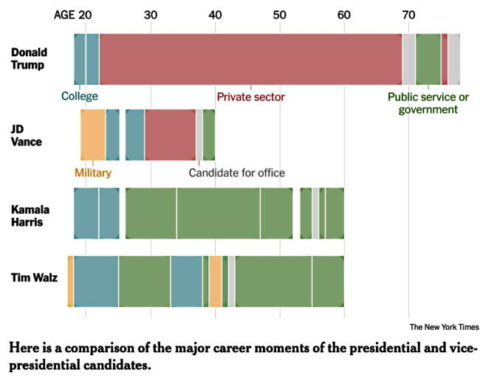
The respective public versus private sector experiences of the 2024 Presidential/Vice Presidential candidates.
New York Times
In broad terms, Democrats have faith in government while the GOP is skeptical — though a lot of Republicans are willing to suspend disbelief when their party controls the executive branch.
The contrast between the two parties can be seen in stark terms in the resumes of the two presidential and vice-presidential tickets. The New York Times made it easier to compare them earlier this month when it ran charts of the career timelines of Trump, J.D. Vance, Kamala Harris and Tim Walz. Their roles at any given age were colour-coded for college, military, private sector, public service or politics, federal government and candidate for federal office.
Peach is the colour used by the Times to indicate employment in the private sector, which produces the opportunities and wealth that are mugged away (taxation is theft by another name, after all) to fund all other sectors. It appears under the headings of “businessman” and “television personality” for Trump and as “lawyer and venture capitalist” for Vance. But private-sector peach appears nowhere in the timelines for Harris and Walz. Besides, perhaps, some odd jobs when they were young, neither of the Democrats has worked in the private sector.
Now, not all private-sector jobs are created equal. Some of the Republican presidential candidate’s ventures, like Trump University, have been highly sketchy, as are some of his practices — he’s openly boasted about donating to politicians to gain favours (though try to do business in New York without greasing palms). I’m not sure I’d want The Apprentice on my resume. But there must be some value to working on the receiving end of the various regulations and taxes government officials foist on society rather than spending one’s career brainstorming more rules without ever suffering the consequences.
In 1992, former U.S. senator and 1972 Democratic presidential candidate George McGovern penned a column for the Wall Street Journal about the challenges he encountered investing in a hotel after many years in government.
“In retrospect, I … wish that during the years I was in public office, I had had this firsthand experience about the difficulties business people face every day,” he wrote. He bemoaned “federal, state and local rules” passed with seemingly good intentions but little thought to the burdens and costs they imposed.
The lack of private sector stints in the career timelines of Harris and Walz means that, like pre-hotel McGovern, they’ve never had to worry about what it’s like to suffer the policies of a large and intrusive government.
That said, it’s possible to overstate the lessons learned by Republicans and Democrats from their different experiences. Vance, despite having worked to fund and launch businesses, has, since being elected to the U.S. Senate, advocated capturing the regulatory state and repurposing it for political uses, including punishing enemies.
Not only does power corrupt, but it does so quickly.
The US Navy’s mis-managed decline continues
Niccolo Soldo from his weekend wrap-up of various news articles that caught his eye:
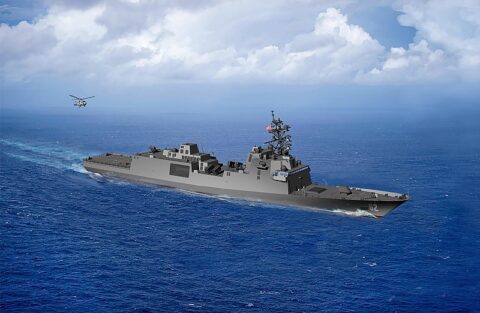
Artist’s rendering of the US Navy’s FFG(X) Constellation-class guided missile frigate. Initial contract awarded 30 April, 2020, but delivery of the first ship is not expected until 2029 due to design changes and other issues.
US Navy image via Wikimedia Commons.
One data point that works in favour of American Declinism is the US Navy’s inability to not just keep up with the Chinese in terms of the production of ships, but to also maintain its own production output. Many lightly-armed littoral combat ships have been retired, for example, with nothing to replace them.
These production setbacks have been pointed out to me, with one mutual on Twitter/X reiterating the point so that I get it (I do!). This is an actual problem that requires solving, and fast. It is partially to blame for the Americans effectively ceding the Red Sea to the Houthis (for now).
AP has done a partial deep-dive (horrible language here, I apologize) on this issue:
The labor shortage is one of myriad challenges that have led to backlogs in ship production and maintenance at a time when the Navy faces expanding global threats. Combined with shifting defense priorities, last-minute design changes and cost overruns, it has put the U.S. behind China in the number of ships at its disposal — and the gap is widening.
Navy shipbuilding is currently in “a terrible state” — the worst in a quarter century, says Eric Labs, a longtime naval analyst at the Congressional Budget Office. “I feel alarmed,” he said. “I don’t see a fast, easy way to get out of this problem. It’s taken us a long time to get into it.”
Marinette Marine is under contract to build six guided-missile frigates — the Navy’s newest surface warships — with options to build four more. But it only has enough workers to produce one frigate a year, according to Labs.
A lot of the guys who know how to do this work are retiring or have already retired. Sound familiar?
One of the industry’s chief problems is the struggle to hire and retain laborers for the challenging work of building new ships as graying veterans retire, taking decades of experience with them.
Shipyards across the country have created training academies and partnered with technical colleges to provide workers with the skills they need to construct high-tech warships. Submarine builders and the Navy formed an alliance to promote manufacturing careers, and shipyards are offering perks to retain workers once they’re hired.
Andreini trained for his job at Marinette through a program at Northeast Wisconsin Technical College. Prior to that, he spent several years as a production line welder, making components for garbage trucks. He said some of his buddies are held back by the stigma that shipbuilding is a “crappy work environment, and it’s unsafe.”
The problem:
Much of the blame for U.S. shipbuilding’s current woes lies with the Navy, which frequently changes requirements, requests upgrades and tweaks designs after shipbuilders have begun construction.
That’s seen in cost overruns, technological challenges and delays in the Navy’s newest aircraft carrier, the USS Ford; the spiking of a gun system for a stealth destroyer program after its rocket-assisted projectiles became too costly; and the early retirement of some of the Navy’s lightly armored littoral combat ships, which were prone to breaking down.
The Navy vowed to learn from those past lessons with the new frigates they are building at Marinette Marine. The frigates are prized because they’re less costly to produce than larger destroyers but have similar weapon systems.
Now check this out:
The Navy chose a ship design already in use by navies in France and Italy instead of starting from scratch. The idea was that 15% of the vessel would be updated to meet U.S. Navy specifications, while 85% would remain unchanged, reducing costs and speeding construction.
Instead, the opposite happened: The Navy redesigned 85% of the ship, resulting in cost increases and construction delays, said Bryan Clark, an analyst at the Washington-based think tank Hudson Institute. Construction of the first-in-class Constellation warship, which began in August 2022, is now three years behind schedule, with delivery pushed back to 2029.
The final design still isn’t completed.
Shifting threats:
Throughout its history, the Navy has had to adapt to varying perils, whether it be the Cold War of past decades or current threats including war in the Middle East, growing competition from Chinese and Russian navies, piracy off the coast of Somalia and persistent attacks on commercial ships by Houthi rebels in Yemen.
And that’s not all. The consolidation of shipyards and funding uncertainties have disrupted the cadence of ship construction and stymied long-term investments and planning, says Matthew Paxton of the Shipbuilders Council of America, a national trade association.
“We’ve been dealing with inconsistent shipbuilding plans for years,” Paxton said. “When we finally start ramping up, the Navy is shocked that we lost members of our workforce.”
How is the US Navy supposed to protect Taiwan from a potential Chinese invasion?
August 18, 2024
Hirohito Announces Surrender – War Continues – WW2 – Week 312 – August 17, 1945
World War Two
Published 17 Aug 2024Hirohito broadcasts Japan’s surrender to the world- despite an attempted to coup to prevent it from happening, and much of the world celebrates, but the war isn’t really over. The Soviets are busy invading Manchuria, and there’s revolution in Vietnam and Indonesia.
00:00 Intro
00:22 Recap
00:49 Attempted Coup In Japan
04:12 Hirohito Surrenders
08:54 Japanese Surrender In China
12:05 Soviets In Manchuria
17:52 Revolution In Vietnam
20:33 Summary
21:07 Conclusion
(more…)
.30-06 M1918 American Chauchat – Doughboys Go to France
Forgotten Weapons
Published May 4, 2024When the US entered World War One, the country had a grand total of 1,453 machine guns, split between four different models. This was not a useful inventory to equip even a single division headed for France, and so the US had to look to France for automatic weapons. In June 1917 Springfield Armory tested a French CSRG Chauchat automatic rifle, and found it good enough to inquire about making an American version chambered for the .30-06 cartridge. This happened quickly, and after testing in August 1917, a batch of 25,000 was ordered. Of these, 18,000 were delivered and they were used to arm several divisions of American troops on the Continent.
Unfortunately, the American Chauchat was beset by extraction problems. These have today be traced to incorrectly cut chambers, which were slightly too short and caused stuck cases when the guns got hot. It is unclear exactly what caused the problem, but the result was that most of the guns were restricted to training use (as best we can tell today), and exchanged for French 8mm Chauchats when units deployed to the front. Today, American Chauchats are extremely rare, but also very much underappreciated for their role as significant American WWI small arms.
(more…)
QotD: Cell phones on airplanes
The thought of people being able to use cell phones on airplanes during flight is almost too horrible to contemplate. But I understand why the airlines are considering it: They’ve run out of new ways to make flying unpleasant. Long lines, inexplicable delays, lost baggage, no food, filthy airplanes, unhappy workers (is anyone else worried about planes being flown by despondent pilots who’ve had their pensions stolen from them?) — allowing people to use their cell phones is the only way for the airlines to freshen up the hell they’ve created for us.
Andrew Sullivan, “Terror Cells”, AndrewSullivan.com, 2005-08-09.
August 16, 2024
“Operation Dragoon … was described by Adolf Hitler as the worst day of his life”
The “other” D-Day landing in France that few people know much about: Operation Dragoon.
Often referred to as “the other D-Day”, Op Dragoon ran until 14 September 1944 and was a pivotal turning point in the Second World War.
Op Dragoon was a huge and complex operation by land, sea and air that liberated nearly two-thirds of France by linking up with troops from the Normandy invasion on 11 September and pushing the German forces right back to their frontier.
It also secured the ports of Marseilles and Toulon so Allied troops could flood into France.
This was a bitter blow for Hitler, who during conversations with his generals that were discovered in records written in shorthand, said: “The 15th of August was the worst day of my life”.
Dr Peter Caddick-Adams, a military historian and defence analyst, spoke to BFBS Forces News about Operation Dragoon, a largely French/American operation with support from countries including the UK and Canada.
He said: “It set the victory over Germany firmly on its way — and the end of the Second World War couldn’t really have been achieved without Operation Dragoon.
“This is the D-Day that you’ve never heard of.
“Originally there was planned to be two invasions of France on the same day — in Normandy and on the south coast of France along the Riviera.
“It was found that we didn’t have enough landing craft to do both at the same time simultaneously.”
It also didn’t help that Winston Churchill was against the idea and tried to cancel the operation.
The Prime Minister wanted the Italian campaign to remain dominant and was worried Dragoon would take troops and other resources away from Italy.
However, despite his best efforts, the Americans and French prevailed and Operation Dragoon went ahead.
Initially, the operation was given the codename Anvil, because Operation Overlord, the invasion of Normandy, was originally going to be called Sledgehammer.
The plan was for Germany’s armed forces to be smashed between the hammer and the anvil.
Churchill never changed his opinion about the operation despite its eventual success, as Dr Caddick-Adams explained: “At the last minute Churchill had the name changed to Dragoon and, legend has it, because he felt he was being dragooned into an operation that he didn’t want to undertake”.

